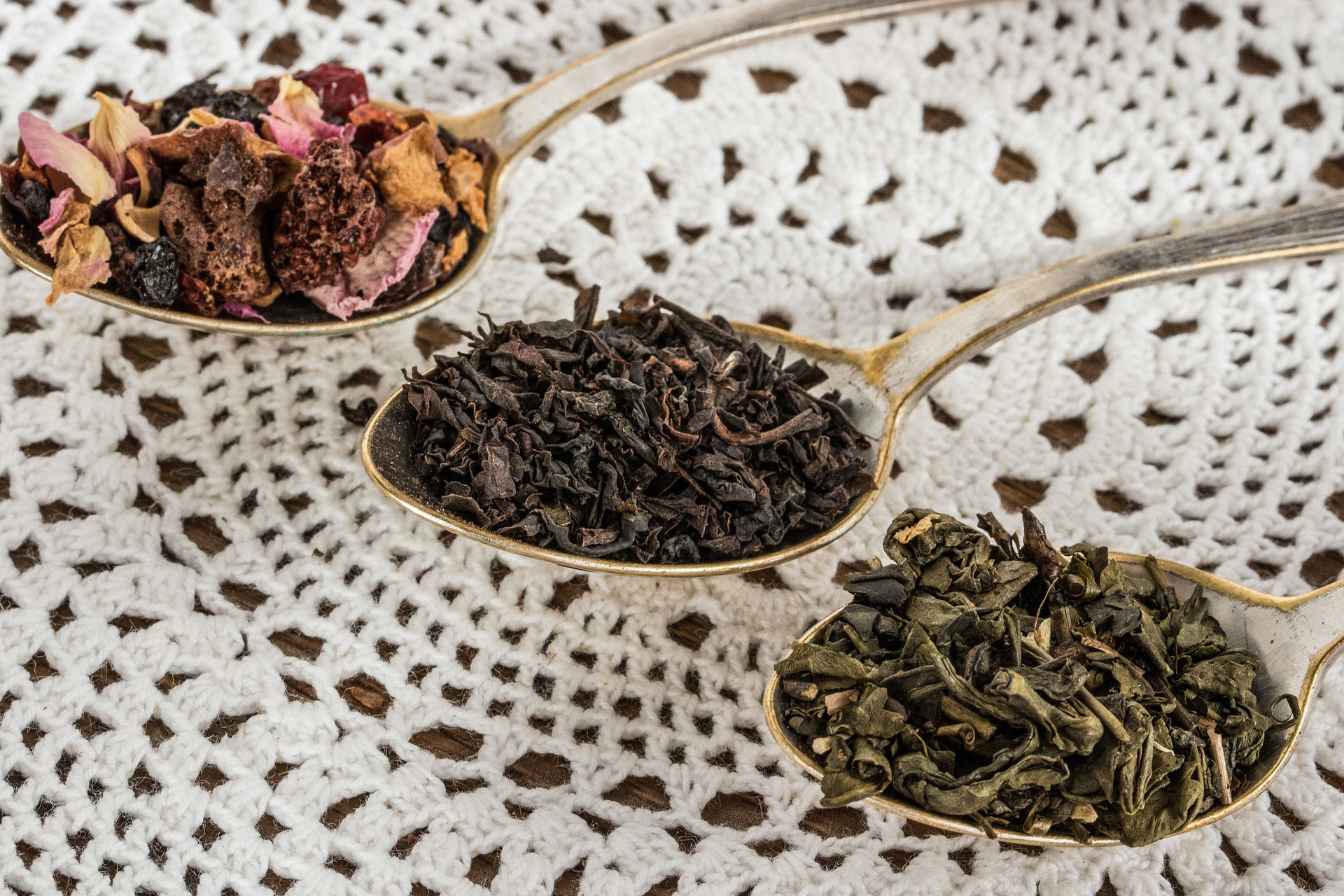Tea Types
The processing rather that the variety of Camellia sinensis determines whether a tea is designated as black (fermented), green (unfermented), or oolong (semi-fermented). It is possible to make any of the three types from a given variety of tea. However, some varieties are particularly suited for one type of tea and are seldom used to make the other types. For instance, a particular tea plant grown in Southern China and Taiwan makes a superior oolong. The Darjeeling district of India is famous for black teas, and few green teas are produced there.
The harvesting and manufacturing process differs somewhat by country and manufacturer, but in general it involves similar steps.
Leaves are harvested either by hand or mechanically. In fine picking, only the top two leaves and buds are plucked.
For black tea, the freshly plucked leaves are brought to the factory, where they are spread thinly on withering racks. As the moisture evaporates, the leaves become soft and pliable.
From the withering rack the leaves are off to the rolling machine, which breaks up the leaf cells and liberates the oils that give tea its flavor. The leaves come out of the rolling machine in twisted lumps. These are broken up by passing them over course mesh sieves called roll breakers.
The next step is fermentation, the leaves are spread in very thin layers in a cool, humid room . As the leaves absorb oxygen they turn a bright copper color. This process, called oxidation, produces black tea.
The last stage is drying, or firing, which stops further oxidation and dries the leaves evenly. Here the leaves are spread on trays, and hot dry air is blown through them. This firing turns the leaves black. The tea maker’s judgment as to time, temperature, and humidity is critical to the quality of the final product.
Green tea is steamed immediately after picking. This softens the leaves for rolling and keeps the juices from oxidizing. The leaves are then rolled and dried. Since they do not go through the oxidation stage, these leaves remain green after firing.
Oolong tea is prepared in a manner similar to that of black tea; however, Oolong tea is only partially oxidized. The partial oxidation and the particular variety of leaf used give Oolong tea its special flavor.

